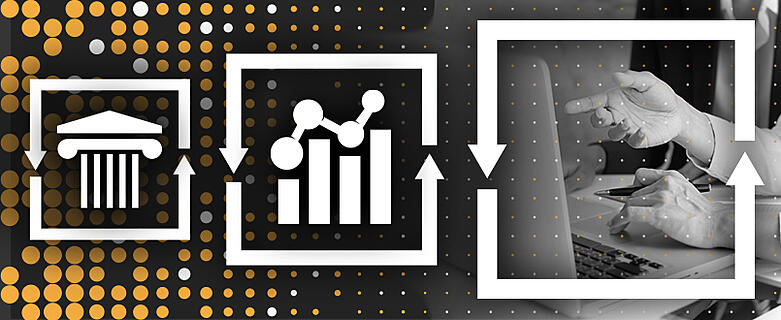News

How Chargebacks Can Damage Your Brand
According to Jeff Bezos, "A brand for a company is like a reputation for a person. You earn reputation by trying to do hard things well." Developing and protecting a good brand is an essential part of any merchant business. Any of a number of mistakes and weaknesses can threaten a merchant’s brand. It can be bewildering trying to track down and remedy all of those sources of brand damage. However, there is an unexpectedly useful tool in understanding the sources of brand damage: the chargeback.
The sorts of issues with a business that lead to chargebacks are many of the same sorts of issues that lead to brand damage. Understanding what causes chargebacks can provide a roadmap to a business’s weak points. A merchant can strengthen their business by following that roadmap, repairing those weak points, reducing those chargebacks, and preventing brand damage.
How Do Chargebacks Relate to Brand Damage?
Legitimate consumers do not want to file chargebacks. If they are doing so, it is because some aspect of the merchant’s business is confusing them or leaving them unsatisfied. That underlying source of dissatisfaction or confusion has consequences for the merchant’s business beyond the resulting chargebacks. Whatever is causing these sorts of chargebacks is an indication of something about the business that is resonating negatively with consumers and, left unchecked, that can lead to lasting brand damage.
Thanks to the internet, consumers have a number of ways to express dissatisfaction through social media as well as consumer reviews and ratings. The unsatisfied consumer who requests a chargeback may very well become the unsatisfied consumer who posts a widely viewed, negative product review on Amazon or Google. No amount of consumer outreach after the fact can repair the damage of a large volume of these sorts of negative reviews. A damaged brand can be difficult to salvage.
What Are Sources of Chargebacks That Indicate Potential Harm to a Merchant’s Brand?
Chargebacks can arise from a wide variety of sources, including things like true fraud and chargeback fraud. However, for the purposes of understanding the relationship between chargebacks and brand damage, it is more useful to focus on the more benign sources of chargebacks.
Merchant Error
Merchant errors are unfortunate but they are a genuine source of chargebacks. Thankfully, they are also one of the easiest to remedy. If a business receives a notable amount of chargebacks due to merchant error, it is an indication that something is wrong on their end of the transactions. Tracking down the sources of the errors—whether in the website’s code, payment process, or elsewhere—and fixing it can reduce these chargebacks and their related brand damage.
Product Doesn’t Match Description
This is a frequent source of chargebacks. In an ideal world, the unsatisfied consumer would request a refund or otherwise communicate directly with the merchant rather than file a chargeback. However, we do not live in a perfect world. As Søren Kierkegaard wrote in his journals, “It belongs to the imperfection of everything human that man can only attain his desire by passing through its opposite.” A merchant can take these sorts of chargebacks and use them as an impetus to make the product descriptions more accurate, communicating better with consumers, and thus strengthening the merchant’s brand.
Poor or Inaccessible Customer Service
Perhaps an unsatisfied customer did try to contact the merchant before filing a chargeback but could not reach the merchant’s customer service reps or did not find them helpful. This is a sadly frequent issue that can both precipitate chargebacks and cause the sort of significant consumer agitation that leads to reputation damage. Focusing on improving customer service can both reduce chargebacks and significantly improve a merchant’s reputation.
Counterfeit or Defective Merchandise
The complexities of 21st century commerce do nothing to obscure the fact that the most essential aspect of a merchant business is the product being sold. If a merchant is selling inferior or counterfeit products or services, the possibilities of receiving chargebacks and brand damage are raised considerably compared to a business that sells quality merchandise.
Incorrect Currency
This may seem like a minor issue but in the modern world of global markets and international distribution, it may be a concern for merchants. Failing to easily accommodate differences in currency between merchant and consumers can cause the sort of aggravation that leads to chargebacks and brand damage.
Service, Payment, or Delivery Delays
This covers a range of issues that include a product being delivered later than anticipated, a service not being fulfilled within the previously agreed upon timeline, and payments that aren’t processed until long after the purchase was completed. While a merchant may not always have control over the issues that lead to delays—especially during the COVID-19 pandemic and its frequent supply chain issues—a responsible merchant can always make a good effort to communicate with consumers about any previously unanticipated delays.
Recurring Billing Issues
Subscription billing models are an essential part of a whole host of merchant industries and businesses. But they carry particular complications with regards to billing, auto-renewals, and cancellations that must be properly managed lest they lead to chargebacks and brand damage.
Can Brand Damage from Chargebacks be Prevented?
If chargebacks indicate the sorts of weak points that can lead to significant brand damage, then a key element of preventing that brand damage is fully understanding the chargebacks that a business receives. Chargeback management software that allows the merchant to examine their payments ecosystem at both the macro and micro level is essential. It allows merchants to spot broad trends while also focusing on the fine-grained details. Any chargeback management strategy that begins with an analysis of the data generated by this kind of software will be invaluable for the purposes of reducing both chargebacks and brand damage.
No business wants to deal with chargebacks. But, with the right sort of chargeback analytics dashboard, a clever merchant can use these unfortunate eventualities as a tool to improve their business’s reputation. Chargebacks can serve as a means of testing a business for weak spots, indicating exactly what needs to be repaired and improved. Reduce chargebacks and strengthen your brand.
Manage your chargebacks with the expertise, tools, software, and reliability needed to ensure your chargebacks are managed appropriately. MidMetrics offers interactive dashboards, get a comprehensive analytics that matter, and on-demand reports. The ultimate goal at MidMetrics is to give you practical, powerful tools for growing your business, reducing your number of chargebacks, avoiding brand damage and ensuring your merchant accounts are healthy.









